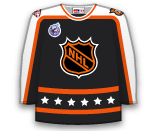Sheahan has six goals and eight assists in 23 games with Grand Rapids this season. He will skate on a line with veterans Todd Bertuzzi and Mikael Samuelsson.

Sheahan has six goals and eight assists in 23 games with Grand Rapids this season. He will skate on a line with veterans Todd Bertuzzi and Mikael Samuelsson.

Sceviour is the top goal scorer in the AHL with 18 in 26 games and he is tied for fourth in the AHL with 6 power play goals. Sceviour practiced on one of the power play units Friday.

Strome was recalled earlier in the week but has not got into the lineup. He was the fifth overall pick in 2011 and has tore up the AHL this season. Strome scored 174 points in 111 games in his final two seasons in the OHL and had nine goals and 33 points in 23 games with Bridgeport this season. The Islanders offence is in need of a jump-start, so they are hoping Strome can bring the spark that they need. It appears he will start tonight's game centring the third line with Brock Nelson and Cal Clutterbuck on his wings.

Strome who was officially recalled on Wednesday will not play tonight because the Islanders want him to practice with the team before he makes his NHL debut. Look for him to play on Saturday vs. the Canadiens.

Regin served as a healthy scratch in Saturday's loss to the Kings. The former Senator has averaged 12:11 TOI in 28 games this season while registering only one goal and three assists with a minus-4 rating. He is not fantasy relevant in any format. He will skate with Michael Grabner and Cal Clutterbuck to start tonight's game.

Conacher was a healthy scratch after recording just one assist in his last 10 games. After being acquired from Tampa Bay for goaltender Ben Bishop, Conacher has just four goals and six assists (10 points) in 41 games with Ottawa. Before he was traded he had 24 points in 35 games with the Lightning. He was expected to compete for a top-6 job at the start of the season, but that has not developed. He will likely skate on the fourth line with Mika Zibanejad and Matt Kassian, while Mike Hoffman takes a seat.
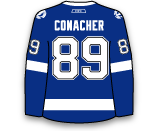
Petry will get back into the lineup tonight after being a healthy scratch for Thursday's game vs. the Avalanche. Head coach Dallas Eakins said he wanted to "reset" Petry who had struggled in recent games. Petry has two goals and four assists to go along with a minus-10 rating in 29 games this year. He will be paired with Martin Marincin.

Wey was the 115th overall pick in 2009 and started the season in the ECHL. After moving to the AHL he posted a goal and two assists in seven games. The Capitals like that Wey is a right handed shot on a blueline filled with lefties. He will start with Dmitry Orlov as his D-partner tonight.
Luke Gazdic will enter the lineup for Joensuu who is a "banged up" according to head coach Dallas Eakins.

"[The rookie] has been thrust into maybe a bigger role than he should be." head coach Dallas Eakins says. "Time to give him a rest for a game." Belov has not recorded a point in his last seven games. The rookie defenseman has averaged 19:32 TOI while recording four assists and a minus-6 rating in 27 games this season.
Petry has two goals, four assists and a minus-10 rating in 29 games this season. He was a minus-2 in 17:28 in Monday's loss to the Coyotes. The Oilers are making a lot of changes tonight, Corey Potter and Phillp Larsen will draw in on D.

With Benn drawing out, Jaime Oleksiak would slide back in. Benn has one assist and is a minus-2 in his last eight games.

With Pavel Datsyuk and Henrik Zetterberg both out, Weiss will shift from the 4th line centre to the 1st line RW. He will skate with Johan Franzen and Gustav Nyquist and start on the wing. The Red Wings offseason signing has be a huge disappointment so far posting just two goals and one assist with a minus-4 rating in 22 games. He gets a shot with two talented players tonight, so maybe this is the opportunity he needs to get his season turned around.
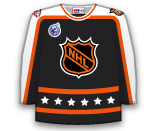
The 2009 14th overall pick has struggled offensively this season posting one goal and two assists with a minus-9 rating in 27 games. Panthers head coach Peter Horachek says Kulikov "needs to be accountable". Kuli is disappointed does not think he was playing bad enough to be kicked out of lineup.

Kadri is only expected to miss tonight's game but should be back in the lineup on Thursday.

Not to be mistaken for the UFC fighter, Albert has spent the last two seasons and 23 games this season with the St. John's IceCaps. In 111 games he has recorded 15 goals and 25 assists (40 points). Albert describes himself as a two-way forward who works hard in the dirty areas of the ice. He is not a fantasy relevant player but the Ohio State product will provide some energy and forward depth in limited minutes with the Jets.
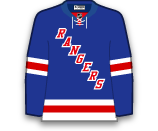
Oleksiak, 20, was the 14th overall pick in 2011 and appeared in 16 games with the Stars last season. He posted two assists and a minus-5 rating in his first NHL go-around. He is a monster at 6-foot-7, 241 lbs. but is a tremendous athlete and brings size and physicality to the Stars blueline.

Connauton, 23, made his NHL debut with the Stars this season, he played 16:05 with a plus-2 rating. If he draws in tonight it would be just his second NHL game after playing 221 games in the AHL since 2010. In that span he had 33 goals and 55 assists (88 points).

Kassian took a bad penalty that led to a Rangers power-play goal in yesterday's 5-2 loss. He has just one goal and a minus-5 rating in his last eight games, obviously coach Tortorella wants to see more discipline and production out of this edgy forward. Zac Dalpe will dress in his place.
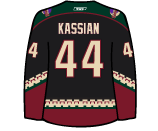
Parros is obviously not fantasy relevant, but this will be his first time facing the Maple Leafs since the season opener when he was knocked out in a fight with Colton Orr. This should be a great game and the fact that Parros is dressing is worth keeping an eye on. Douglas Murray who stands in at 6-foot-3, 245 lbs will also be in the lineup.
